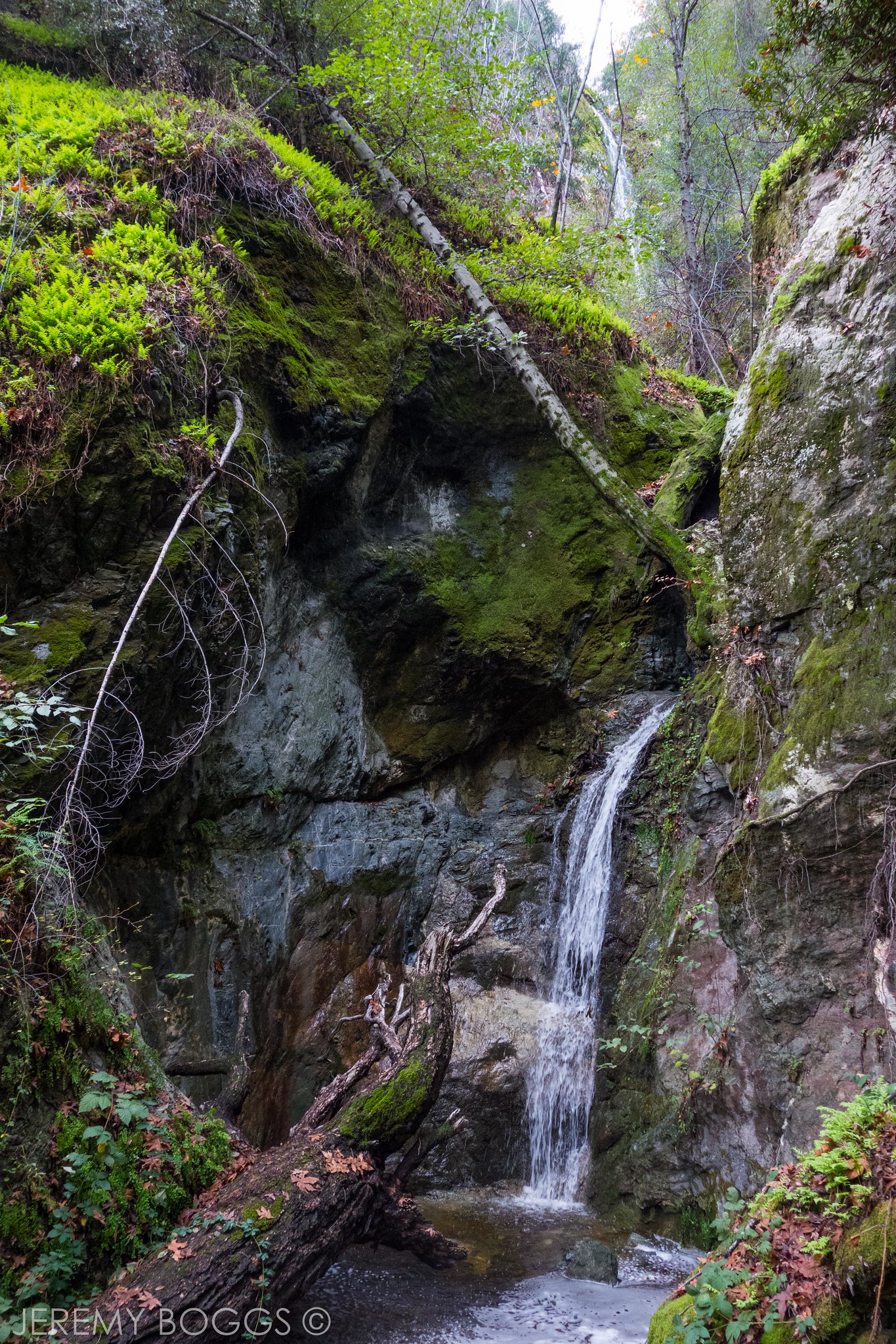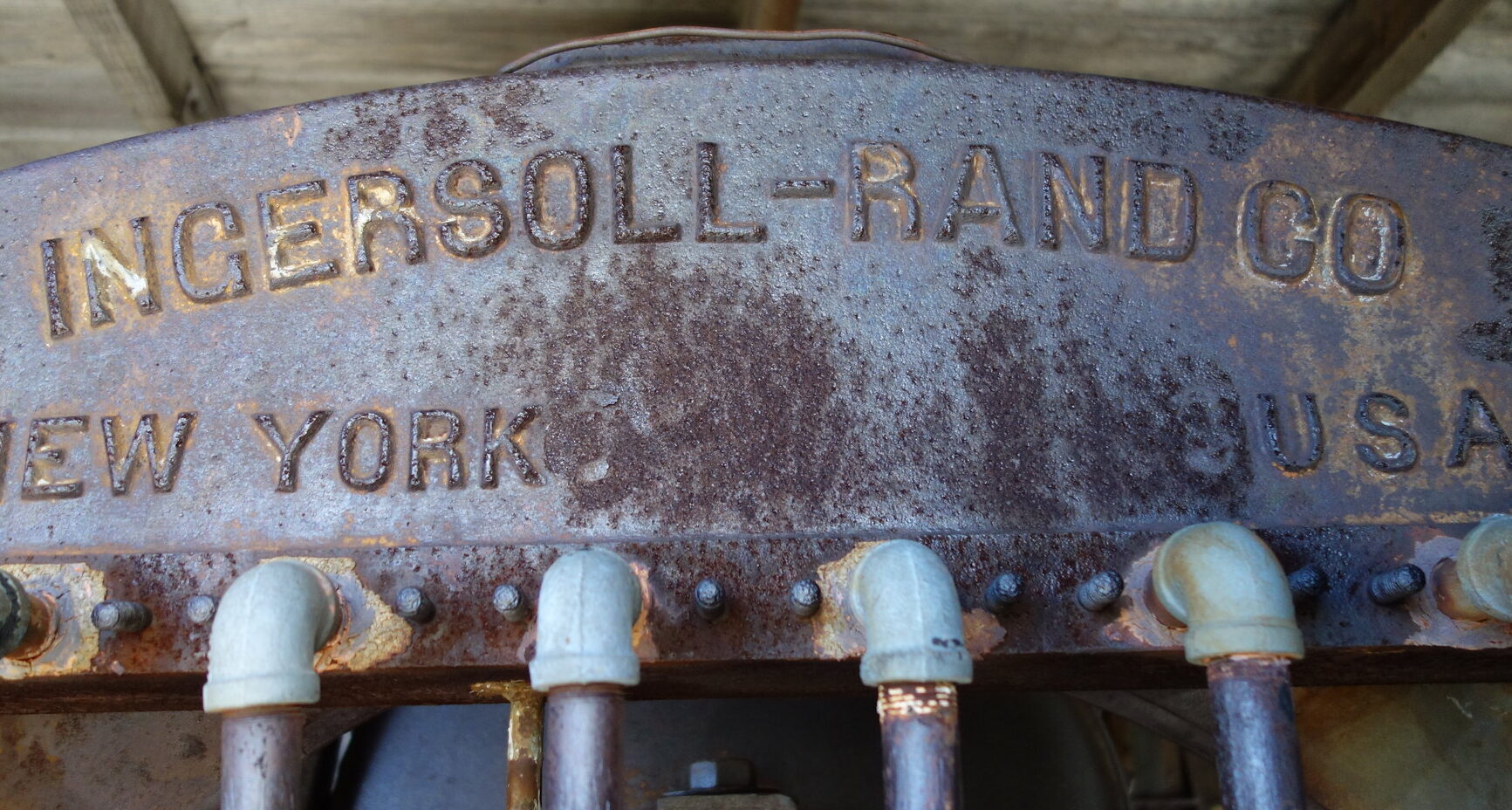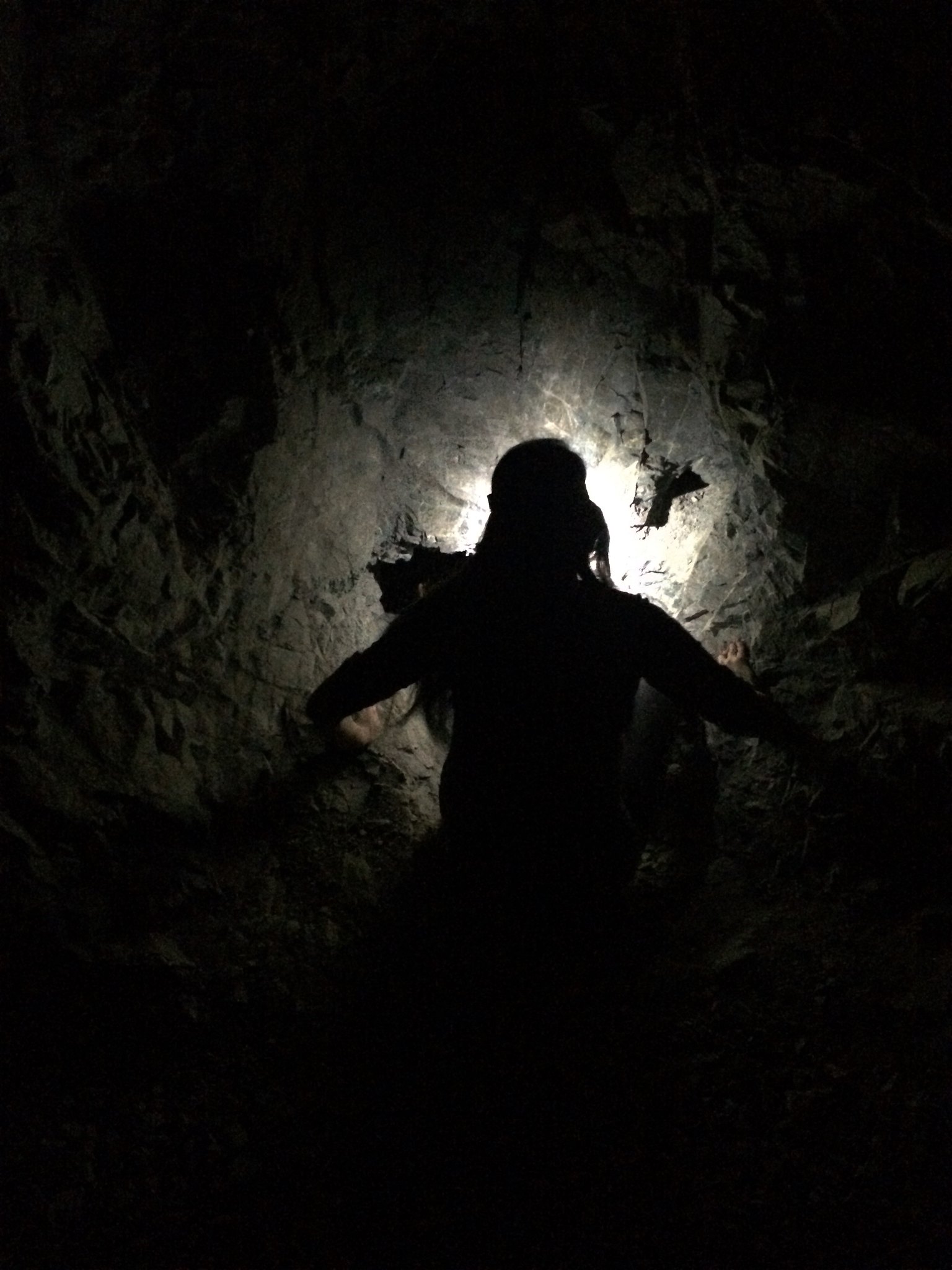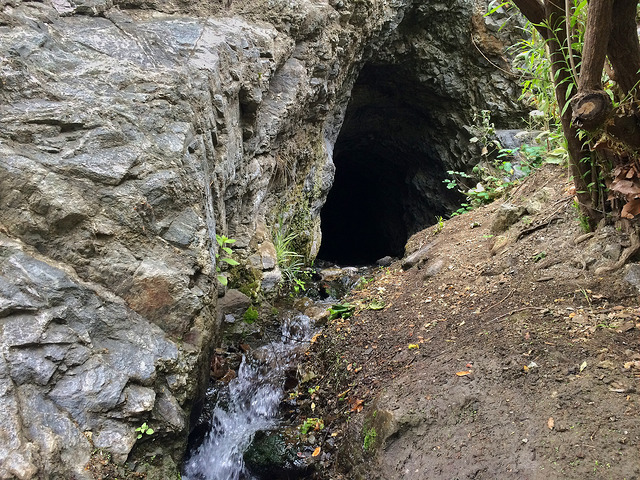East Fork Part i
Eventually, Spanish missionary conquest in the 18th century strongly influenced the removal of the indigenous from the mountains. Consequently their arrival ended the Tongva-Gabrielino population.
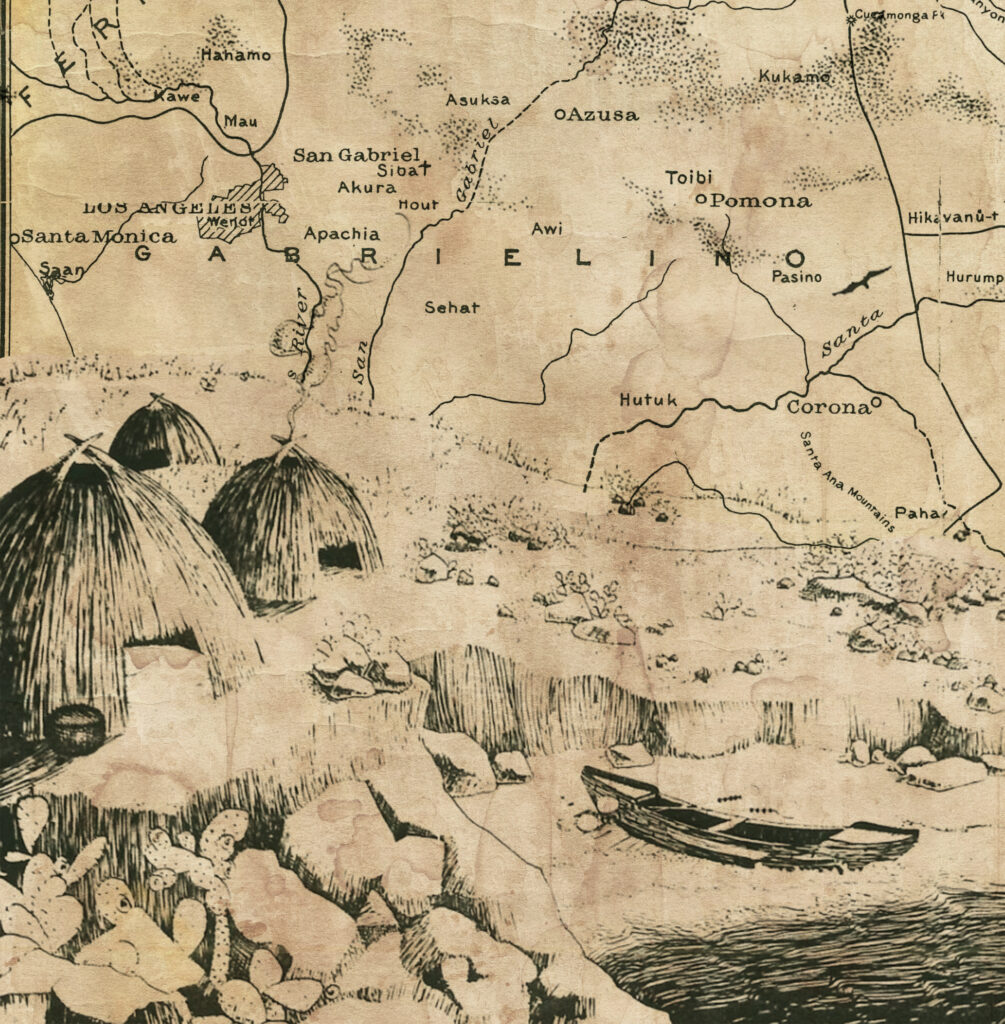
It’s not clear when exactly mining began in the East Fork but stories tell of early mining by Indians for their Spanish masters. Subsequent mining operations uncovered old “gophering” tunnels. These tunnels had their gold removed already. “Gophering” was a type of primitive mining in which tunnels were dug about a yard wide, just large enough to fit one body.
The gopher holes were just large enough to admit the body of one Indian, who passed the gold-bearing ore out of the slender tunnel via a leather pouch attached to a long rawhide thong, according to one story
–John W. Robinson
However, no written evidence exists to authenticate any pre-1850’s gold discovery. When and who dug out these tunnels is forever a mystery!
Thars Gold in Them Thar Hills- Booms Days
The first American miners known to have prospect San Gabriel Canyon drifted down south from the Kern River gold rush via Cajon Pass. Captain William K. Henninger (who would later homestead the area we know as Henninger Flats) led a wave of these prospectors and surveyed the upper San Gabriel area.
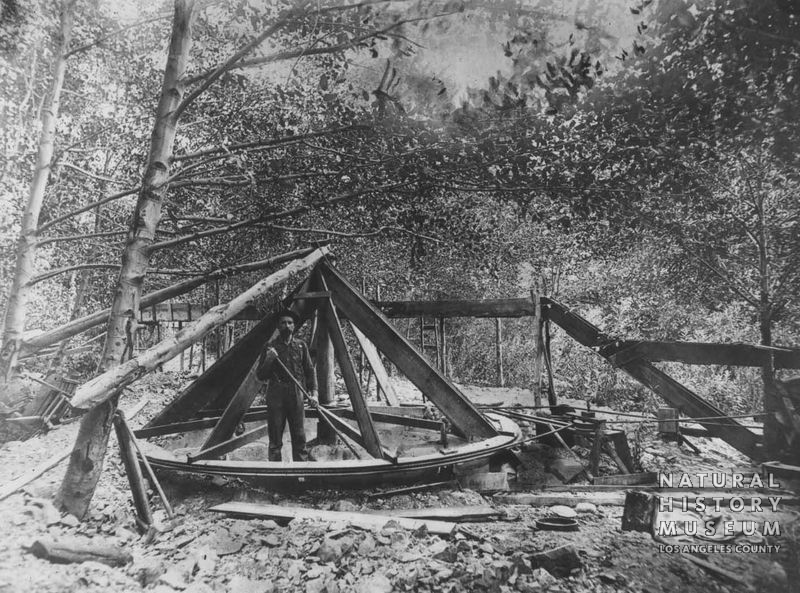 An arrastra in early San Gabriel Canyon. Credit: LA Museum of Natural History
An arrastra in early San Gabriel Canyon. Credit: LA Museum of Natural History
It wasn’t before long that the miners entered the upper reaches of East Fork. Here they found gold and began to recover small amounts. First news of the strike appeared in Los Angeles Star of September 21, 1854

Small placer mining continued at a slow rate for several years in the East Fork. Prospectors panned out $6-$7 a day. The occasional strike and a good year of rain attracted more men to the canyon. Soon, they covered the entire length of the East Fork.
The increase in mining created a demand for supply shops. Prospect Bar, a rudimentary mining camp, sprang up near Cattle Canyon and the East fork. It consisted of a “boarding house, 2 or 3 stores, blacksmith shop, butcher shop, etc.”
Stageline
 The only way up the mines followed a rough road along the canyon bottom. In fact, the road forded the San Gabriel river at least twenty times. Stage line services were established from Los Angeles to the canyon mouth or directly to the mines. The Roberts and Williams stage line left Los Angeles at 7am to arrive at the mines by 4pm
The only way up the mines followed a rough road along the canyon bottom. In fact, the road forded the San Gabriel river at least twenty times. Stage line services were established from Los Angeles to the canyon mouth or directly to the mines. The Roberts and Williams stage line left Los Angeles at 7am to arrive at the mines by 4pm
Eventually, mining companies replaced the lone man and his gold pan. Companies usually consisted of 5-20 miners working for one man. They employed increasingly profitable gold recovery methods like hydraulic washing.
Eldoradoville – The Wild West on East Fork
In time, the people of San Gabriel canyon held a town meeting to create the Eldoradoville Mining District. They established 27 mining laws with the district. The town boasted three general stores along with a half dozen saloons with gambling and dance halls.
Although the towns people created mining laws, lawlessness prevailed and murders took place daily. Sedley Peck described it as the “Downieville of the South- a rough, tough miner’s town”
In fact, a canyon resident, John Robb, who spent more than sixty years of his life in the canyon, claimed that he made more money by prospecting the floor of the local saloon than he was able to make from real mining. Apparently the miners were so careless with their “pokes” when gambling in those days!
In spite of the lawlessness, mining continued on throughout 1861 & 1862. In fact, Wells Fargo reported about $15,000 every month in gold shipments from their Los Angeles Office, most of it coming from San Gabriel Canyon.
Ultimately, during the winter of 1862, a massive downpour triggered a flood to sweep down San Gabriel Canyon, destroying all evidence of this boom town:
Shacks, whiskey barrels, groceries, beds, roulette wheels, sluices, long toms, wing dams and China pumps were swept clean out of the mountains into the floodplains of the San Gabriel Valley.
–John W. Robinson
For this reason, Eldoradoville met its demise on January 17-18, 1862. The rain washed the town away clean, taking the boom days of the San Gabriel along with it.




